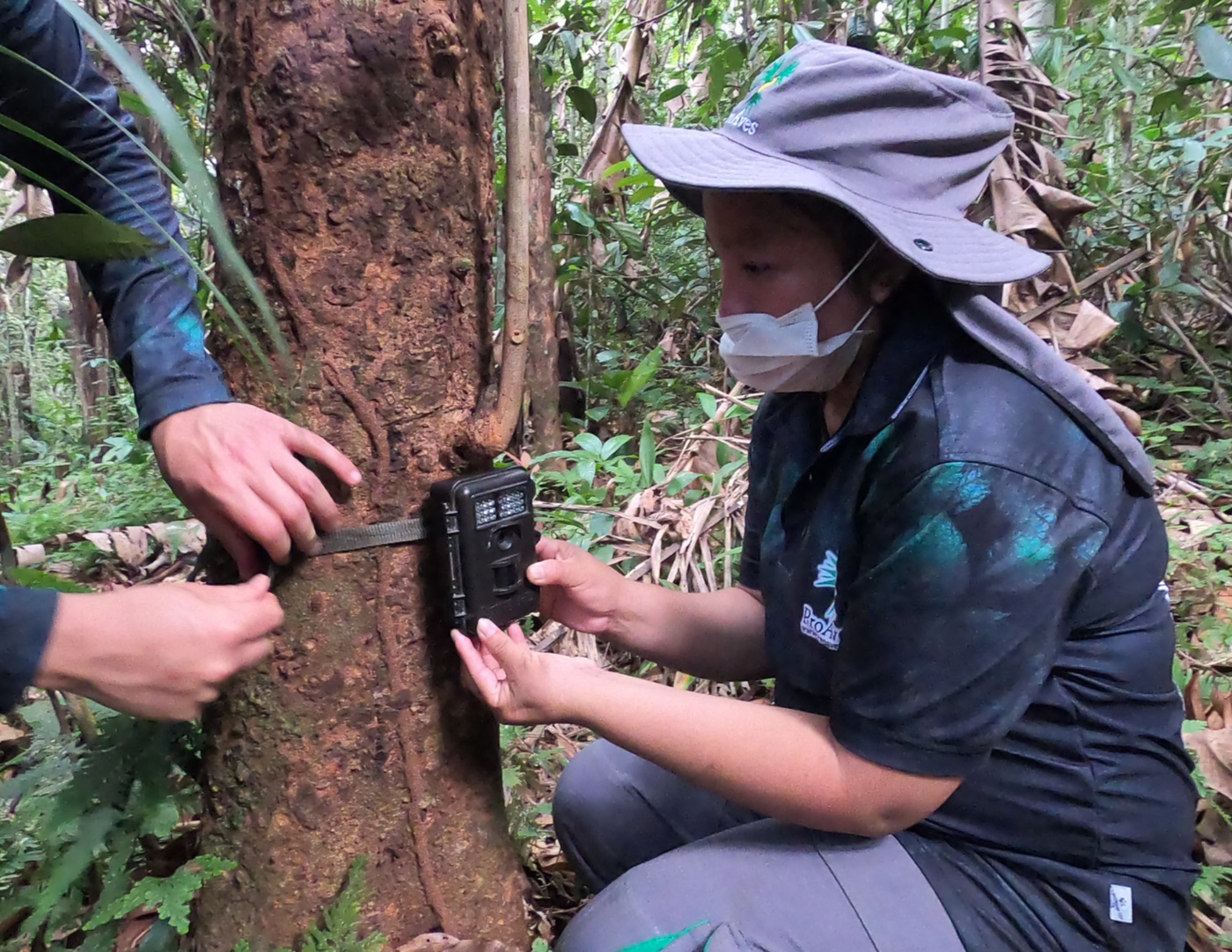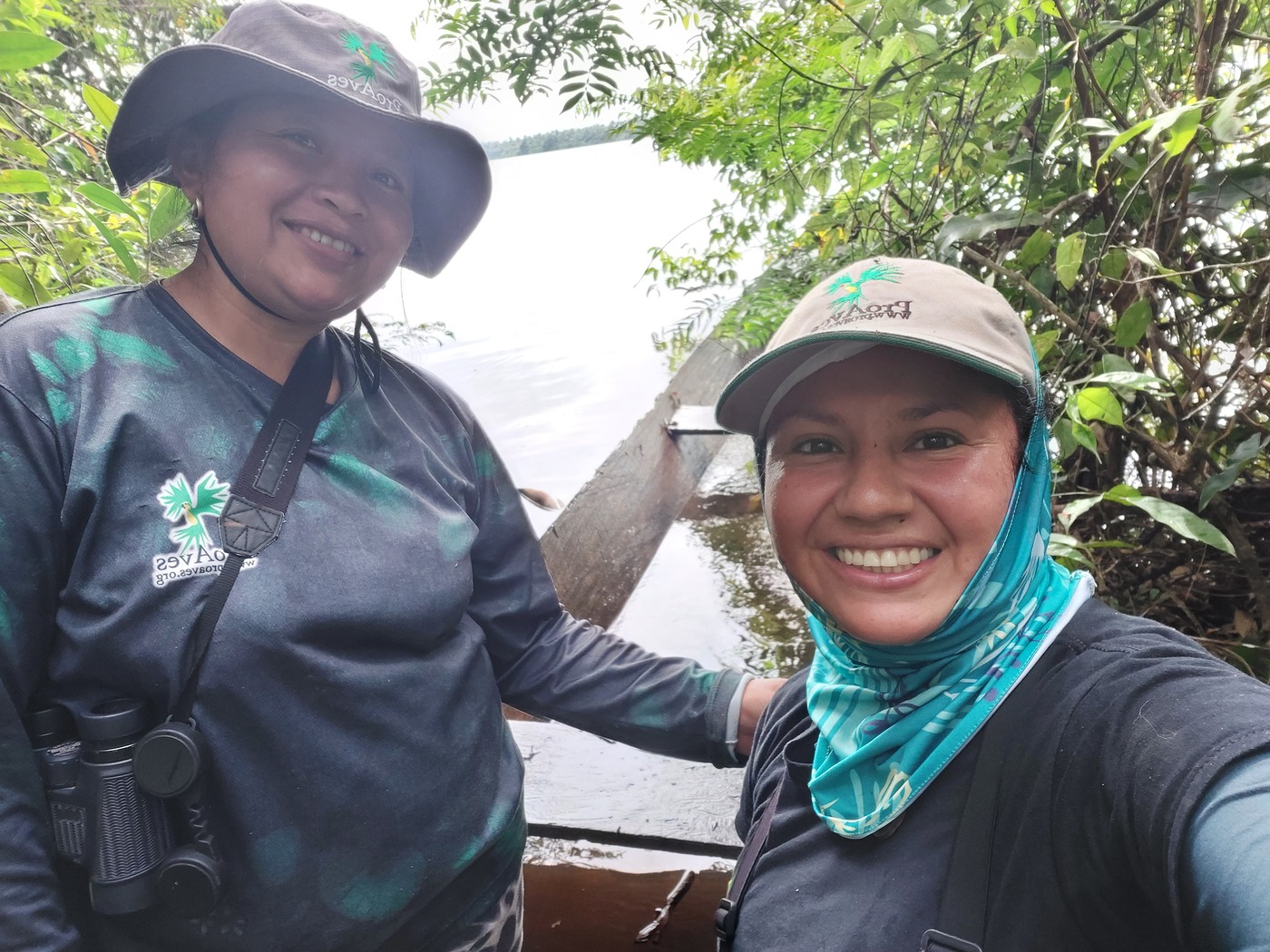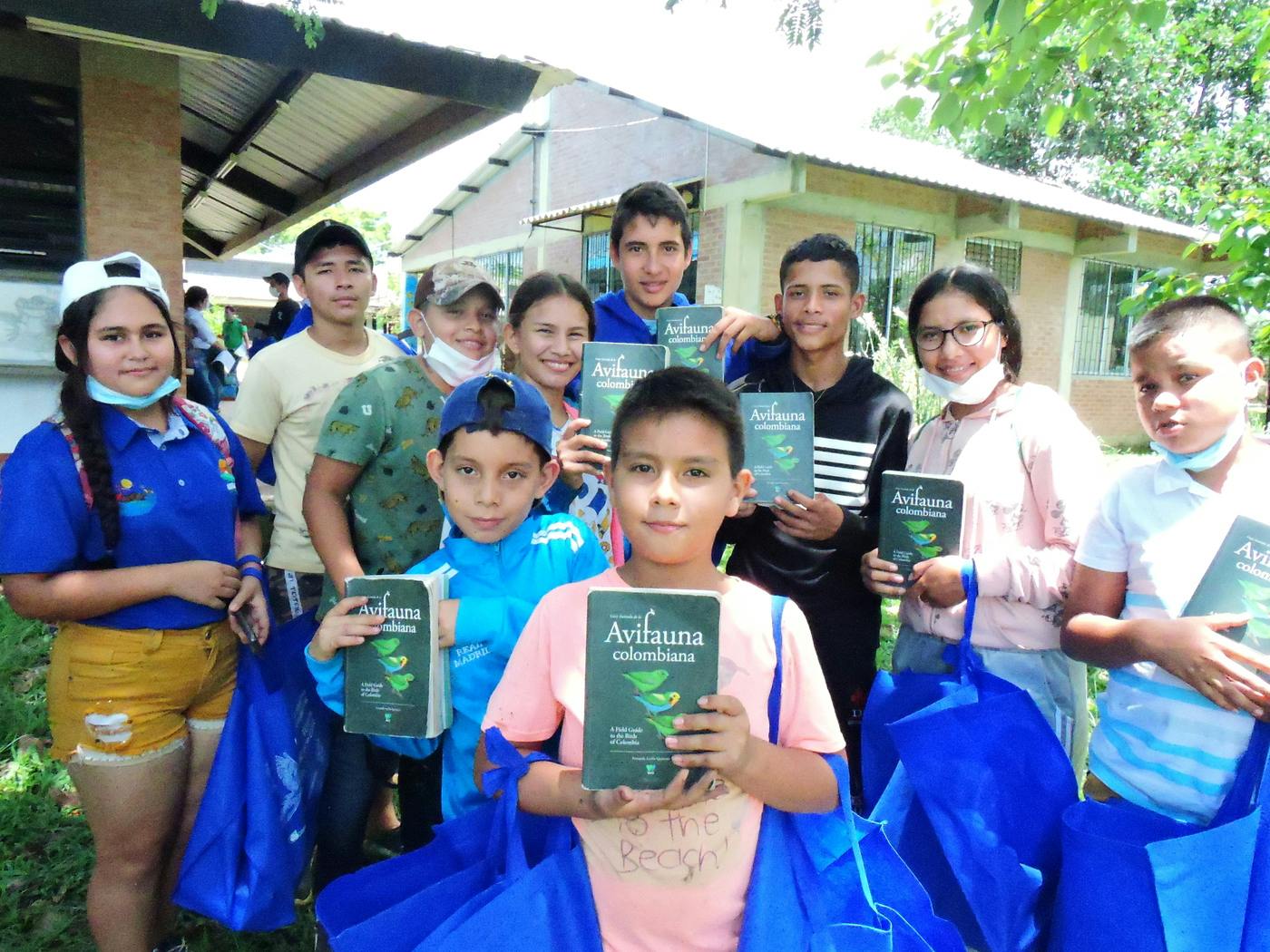Restoring the Amazon While Educating Colombian Women in Conservation
| Category | Restore |
The Guaviare River is one of nature’s most thriving borders. On one side is the lush Amazon rainforest. On the other, the Llanos, or a vast tropical grassland east of the Andes mountains.
Here, Dozens of rare and endemic species are found nowhere else on Earth, including the endangered Amazon pink river dolphin, giant river otter, and the critically endangered churuco monkey.
Yet, many unique plant and animal species still need to be adequately studied or recorded, and further research is critical to shaping future conservation strategies.
This project from Women for Conservation will protect 5,800 hectares of forested land along the Guaviare River and empower local women to be researchers and conservationists.

Tree Monitoring in Jaguar Reserve. Photo: courtesy of Women For Conservation
Women-centered conservation
Women for Conservation was started in 2004 by Sara Ines Lara, a Colombian conservationist and the director of Fundación ProAves. ProAves owns and operates 28 nature reserves across Colombia, and Women for Conservation leads women-centered conservation initiatives at these sites.
All of its projects are entirely women-led, staffed, and center on uplifting rural women through access to conservation education, career training, and sustainable livelihoods. Since the organization's founding, it has helped over 3,000 women look forward to a brighter future while protecting ecosystems at 11 reserves.
Expanding the local biological research station
Two reserves are located in extremely remote regions on the Guaviare River, the El Jaguar Nature Reserve and the Aguila Arpia Reserve. In addition to protecting over 5,000 hectares of land, this project will expand the biological research station at El Jaguar.
Scaling the station will provide scholarships for 15 women to carry out research, train 40 women in environmental stewardship, and develop community conservation in the buffer zones outside the reserves. These are densely forested areas, and it is estimated that 14,500 tons of carbon are removed annually.

At the Jaguar Reserve Station. Photo: courtesy of Women For Conservation
Protecting the forest and empowering people
Success for this project will be creating a durable framework to protect the reserves and foster conservation research. Furthermore, the project provides education and career training for rural women who otherwise have little access to opportunities outside the home.
A promising future ahead for the Guaviare River
This project is intended to become self-sustaining over the next two to three years, funded by partnerships with research institutions and revenue from visitors to the reserves. As the project grows, Women in Conservation hopes to expand the number of protected hectares and offer opportunities for women to start sustainable businesses.
Through women-led conservation, there is a promising future for the surrounding communities, rich biodiversity, and endangered species that call the Guaviare River home.
Explore more projects supported by Daughters.

.jpg?auto=compress%2Cformat)
